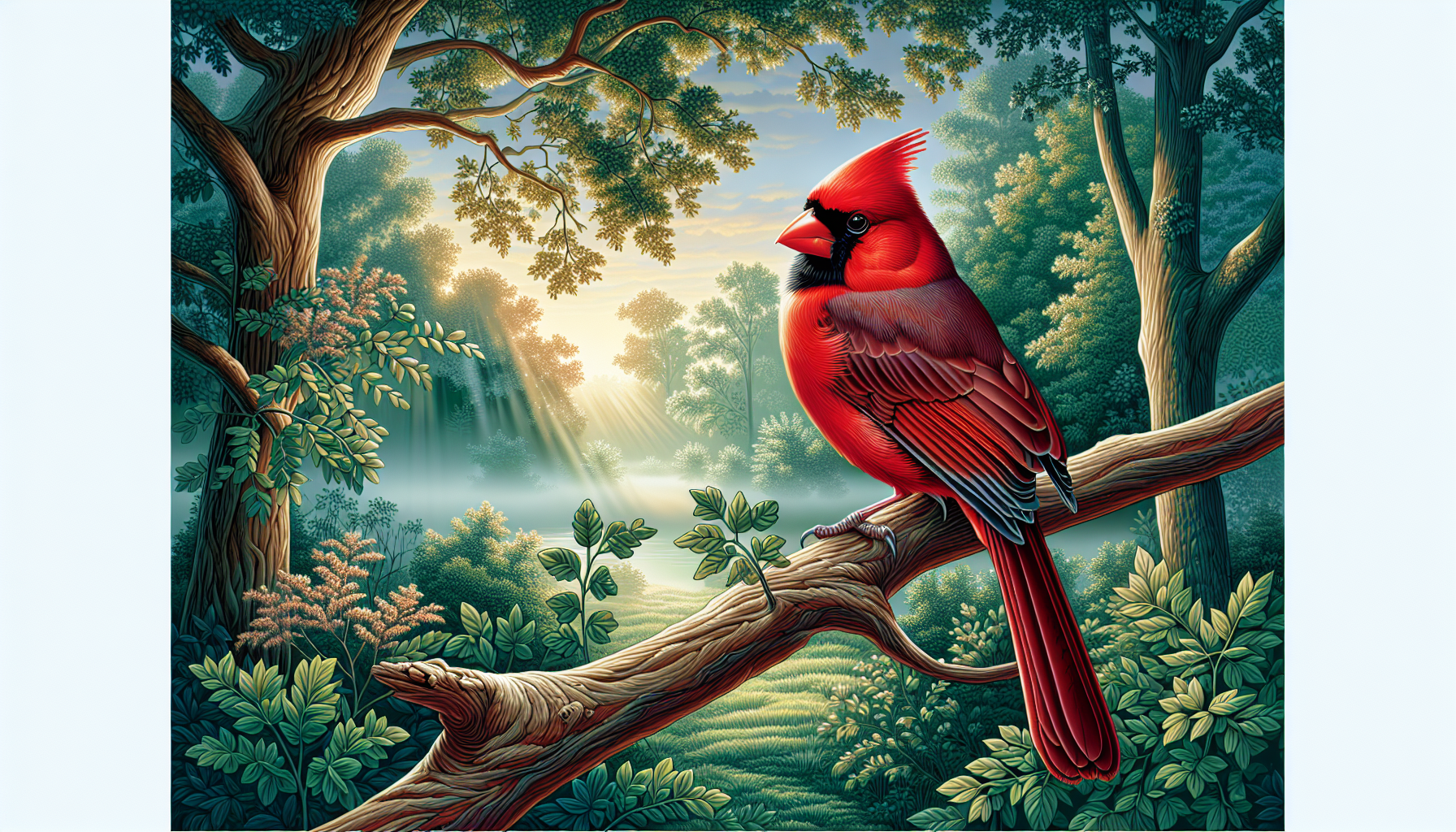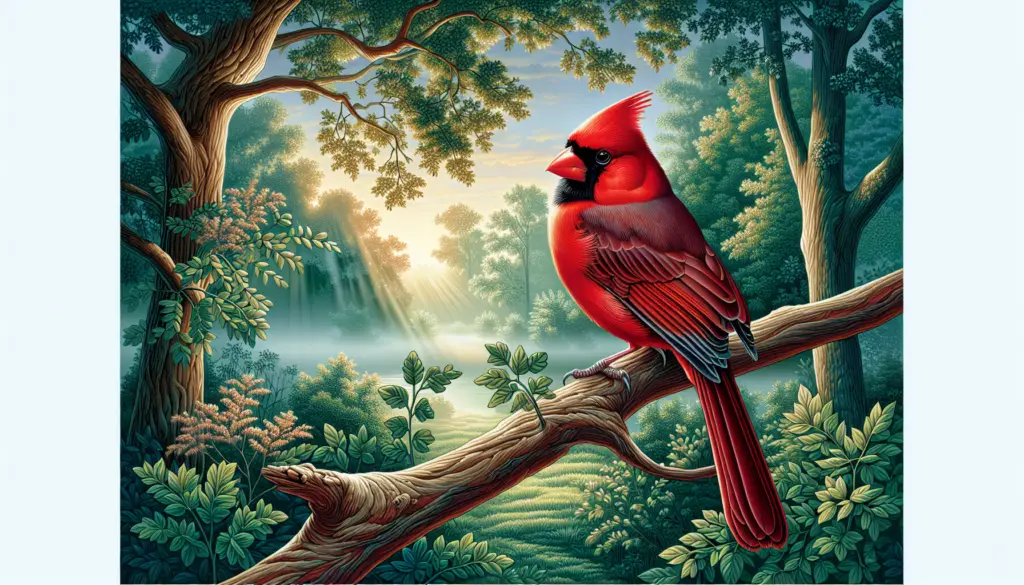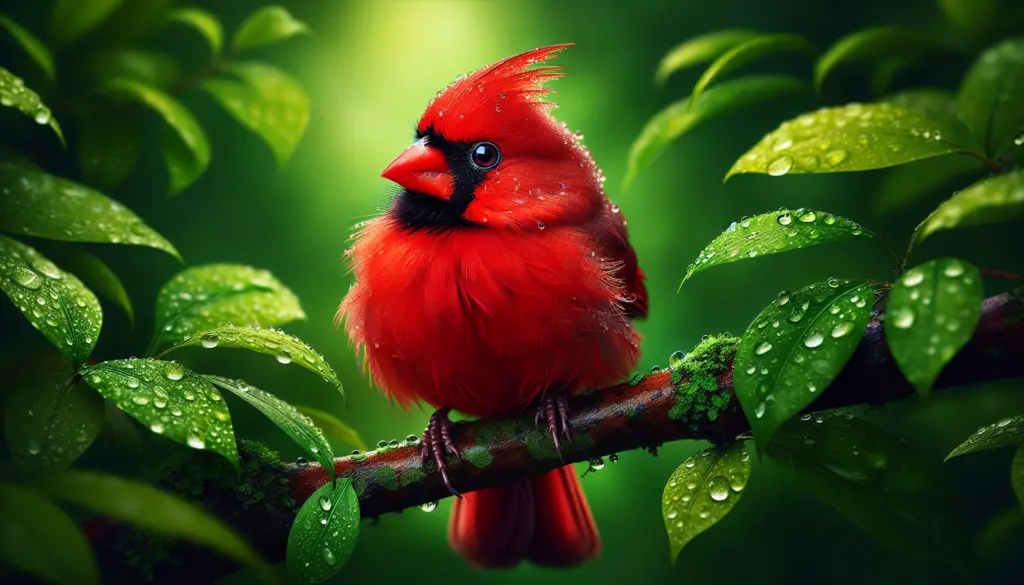Physical Address
304 North Cardinal St.
Dorchester Center, MA 02124
Physical Address
304 North Cardinal St.
Dorchester Center, MA 02124

Have you ever wondered if you can keep a cardinal as a pet? These strikingly beautiful birds with their vibrant red plumage and melodic song are a common sight in many backyards. However, before deciding to bring one into your home, it’s important to understand the requirements and considerations of keeping a cardinal as a pet. From their diet and habitat needs to legal restrictions and the challenges of domesticating a wild bird, this article will explore the feasibility and responsibilities of keeping a cardinal as a pet. So, if you’ve ever dreamed of having one of these stunning creatures as a companion, read on to discover what it takes to care for a cardinal.

When it comes to keeping cardinals as pets, it’s important to consider the laws and regulations that govern the ownership of these beautiful birds. In many countries, cardinals are protected by wildlife conservation laws, which restrict their capture and trade. It is crucial to familiarize yourself with the specific laws in your region to ensure you are in compliance with the legal requirements. Ignorance of these laws can result in hefty fines and legal consequences.
Cardinals are often considered protected species due to their popularity and vulnerability in the wild. Their bright red plumage and melodious songs make them highly sought after in the pet trade, which can put their survival at risk. The protected status ensures that these birds are not overexploited and their populations are conserved for future generations to enjoy. It is essential to respect and support these protections to safeguard the cardinal’s place in the natural world.
Cardinals are native to North and South America, primarily found in the United States, Mexico, and Central America. These birds are highly adaptable and can inhabit a variety of habitats, including forests, swamps, and gardens. They are known for their preference for dense shrubs and thickets, where they build their nests and seek shelter. Understanding their natural habitat is crucial for providing a suitable environment if you intend to keep them as pets.
Cardinals are social birds that generally live in pairs or small groups. Males are easily recognizable by their vibrant red plumage, while females have a more subdued coloration. They communicate through a combination of melodious calls and visual displays, with males often singing to establish their territories and attract mates. Cardinals have a strong bond with their partners and maintain long-lasting relationships, often staying together throughout their lives.
Cardinals are primarily seed eaters, with a preference for sunflower seeds, fruits, and berries. They also consume insects and occasionally feed on tree sap. Providing a well-balanced diet is crucial to ensure their nutritional needs are met. It is important to note that cardinals may have difficulty adjusting to a captive diet, making it essential to replicate their natural feeding habits as closely as possible.
Capturing wild cardinals is not only challenging but also extremely discouraged due to their protected status. Attempting to capture a wild cardinal can cause unnecessary stress and harm to the bird, which may not adapt well to captivity. It is always best to admire these stunning birds in their natural environment rather than trying to keep them as pets against their will.
If you are considering keeping a cardinal as a pet, providing a suitable housing environment is crucial. Cardinals require spacious aviaries with ample room for flight and exercise. The aviary should be well-constructed with strong wire mesh to prevent escapes or entry by predators. Adding perches and nesting spaces that mimic their natural habitat will also provide enrichment for the birds and promote their well-being. Again, this would be discouraged, and frankly, it would be cruel to the cardinal to be confined as a pet.
As mentioned earlier, cardinals have specific dietary requirements that must be met in captivity. A significant portion of their diet consists of seeds, fruits, and insects. It is essential to offer a varied diet that includes fresh fruits and vegetables, high-quality seeds, and occasional insect treats to mimic their natural feeding habits. Consult with avian specialists or experienced bird owners to ensure that your pet cardinal’s nutritional needs are met.
Cardinals, like any other pet bird, require regular veterinary check-ups to ensure their health and well-being. They can be susceptible to various illnesses and diseases, including respiratory infections, feather plucking, and nutritional deficiencies. Adequate time and effort must be invested in providing a clean and hygienic living environment, along with a balanced diet, to prevent these health issues. It is crucial to establish a good relationship with an avian veterinarian who can provide specialized care for your pet cardinal.

Rather than keeping cardinals as pets, a wonderful alternative is to observe them in their natural habitat. Cardinals are commonly found in backyards, parks, and nature reserves, making them easily accessible for birdwatchers and nature enthusiasts. You can set up bird feeders and create a bird-friendly environment in your own yard, attracting these beautiful birds to visit regularly. By observing them in the wild, you can experience their natural behaviors and enjoy their presence without compromising their well-being.
Creating a welcoming environment for cardinals in your yard can be a rewarding experience. Planting shrubs and trees that provide cover and food sources, such as berries and fruits, can attract these birds to your property. Additionally, installing bird feeders filled with their preferred seeds can be an effective way to entice cardinals to visit. By making your yard a cardinal-friendly space, you can enjoy their vibrant presence while contributing to their conservation in the wild.
Breeding cardinals in captivity is a complex and responsible task that requires specialized knowledge and experience. It is crucial to ensure that the breeding process is conducted ethically and in accordance with wildlife protection laws and regulations. Breeding captive cardinals can contribute to the conservation efforts and help maintain healthy populations, but it must be approached with caution and only by individuals who possess the necessary expertise.
Providing an enriched and stimulating environment is not possible for the cardinal species. It is important to remember that cardinals are naturally active birds, and providing ample opportunities for exercise is crucial to their overall health and happiness.
If you are interested in keeping captive cardinals, it is vital to acquire them legally through reputable sources. Ensuring that the birds were bred in captivity and have the necessary documentation is essential to support the conservation efforts and prevent the demand for illegally captured wild individuals. Research and identify licensed breeders or aviculturists who specialize in cardinals to ensure that you are acquiring your pet from a responsible and ethical source.
The demand for cardinals as pets, especially wild-caught individuals, can have a negative impact on their wild populations. Unregulated capture and trafficking of these birds can lead to population decline and disrupt the delicate balance of ecosystems. By choosing not to keep cardinals as pets, you can contribute to the preservation of their natural habitats and minimize the disturbance to these beautiful birds in the wild.
Purchasing or possessing wild cardinals captured illegally supports the illegal wildlife trade, which is a significant global concern. This trade not only threatens the survival of endangered species but also perpetuates cruelty and exploitation of wildlife. By refraining from owning cardinals as pets and advocating against the illegal wildlife trade, you can actively contribute to the conservation of these birds and countless other species worldwide.
Keeping cardinals as pets raises ethical considerations regarding their welfare and quality of life. Cardinals are highly active and social birds that require ample space, appropriate diet, and mental stimulation to thrive. Considering these factors, it is important to question whether it is ethical to confine these birds to captivity, where their natural behaviors and social interactions may be limited. By making compassionate choices and putting the well-being of these birds first, we can demonstrate responsible and ethical pet ownership.
Before considering any pet, including birds like cardinals, it is crucial to research extensively and educate yourself about their specific needs and requirements. Understanding their natural behaviors, dietary needs, and space requirements will contribute to a more responsible and fulfilling ownership experience. Educating yourself about responsible pet ownership can also help prevent impulse purchases and ensure that you are adequately prepared for the commitment required to care for these animals.
While cardinals may not be suitable pets for most people due to their specialized needs, there are numerous bird species that can provide companionship and fulfillment as pets. Researching and selecting bird species that are more adaptable to captivity, such as budgerigars or cockatiels, can be a more suitable choice for individuals looking to experience the joys of pet bird ownership. Considering the welfare and suitability of the species is essential to ensure a positive experience for both the owner and the bird.
Preserving the natural habitats of cardinals is crucial for their long-term survival. Protecting forests, wetlands, and other ecosystems where cardinals thrive, ensures the availability of suitable habitats and resources for them. Supporting initiatives and organizations dedicated to habitat conservation can go a long way in safeguarding the future of these birds and their ecosystems.
Numerous organizations and wildlife sanctuaries work tirelessly to conserve cardinals and their habitats. Donating to and supporting these organizations financially or through volunteer work can make a significant difference in their conservation efforts. By contributing to research, conservation projects, and public education initiatives, we can actively participate in the preservation of these beautiful birds for generations to come.
While the allure of keeping a cardinal as a pet may be tempting, it is important to consider the legal ramifications, ethical concerns, and the well-being of these birds. Appreciating cardinals in their natural habitat, attracting them to your yard, and supporting conservation efforts can provide a fulfilling experience while ensuring their continued survival. By making responsible and compassionate choices, we can protect and celebrate the beauty of cardinals and contribute to the preservation of our natural world.

My name is Shane Warren, the author behind Your Bird Buddy – your ultimate guide to the wonderful world of birds! Unleash your inner avian explorer as we delve into a vibrant library of knowledge dedicated to all things feathered. From learning about diverse bird species from across the globe to understanding their captivating habitats and behaviors, I’m here to fuel your passion for these magnificent creatures. Not only that, but I also provide valuable insights on being a responsible and informed pet bird owner. Join our vibrant community and let’s celebrate the feathered wonders of the world together – one chirp at a time. And be sure to join our Your Bird Buddy Community over on Facebook!